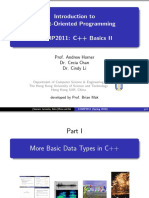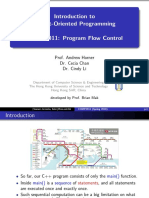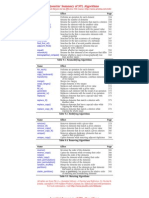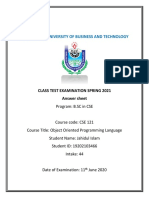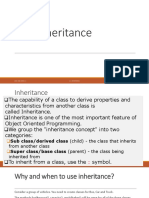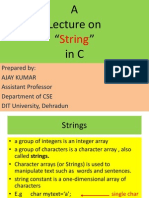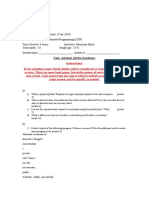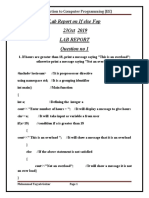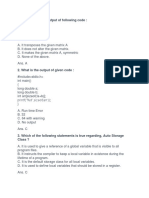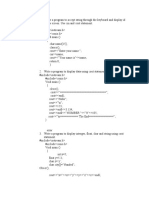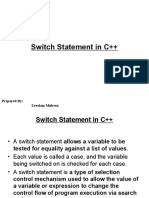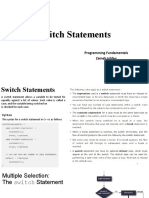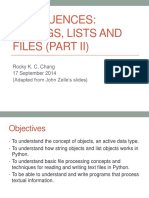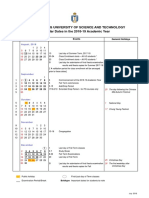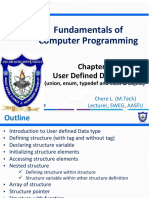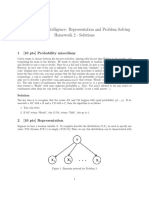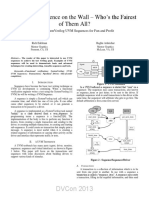0% found this document useful (0 votes)
99 views13 pagesIntroduction To Object-Oriented Programming COMP2011: C++ Control II
1) The document introduces the switch statement in C++, which allows multiple choices based on the value of an integral expression.
2) Examples are provided to demonstrate using switch to select different outputs based on integer and character values.
3) The enum keyword allows defining a new data type with symbolic names for integer values, making code more readable.
Uploaded by
jnfzCopyright
© © All Rights Reserved
We take content rights seriously. If you suspect this is your content, claim it here.
Available Formats
Download as PDF, TXT or read online on Scribd
0% found this document useful (0 votes)
99 views13 pagesIntroduction To Object-Oriented Programming COMP2011: C++ Control II
1) The document introduces the switch statement in C++, which allows multiple choices based on the value of an integral expression.
2) Examples are provided to demonstrate using switch to select different outputs based on integer and character values.
3) The enum keyword allows defining a new data type with symbolic names for integer values, making code more readable.
Uploaded by
jnfzCopyright
© © All Rights Reserved
We take content rights seriously. If you suspect this is your content, claim it here.
Available Formats
Download as PDF, TXT or read online on Scribd
/ 13

